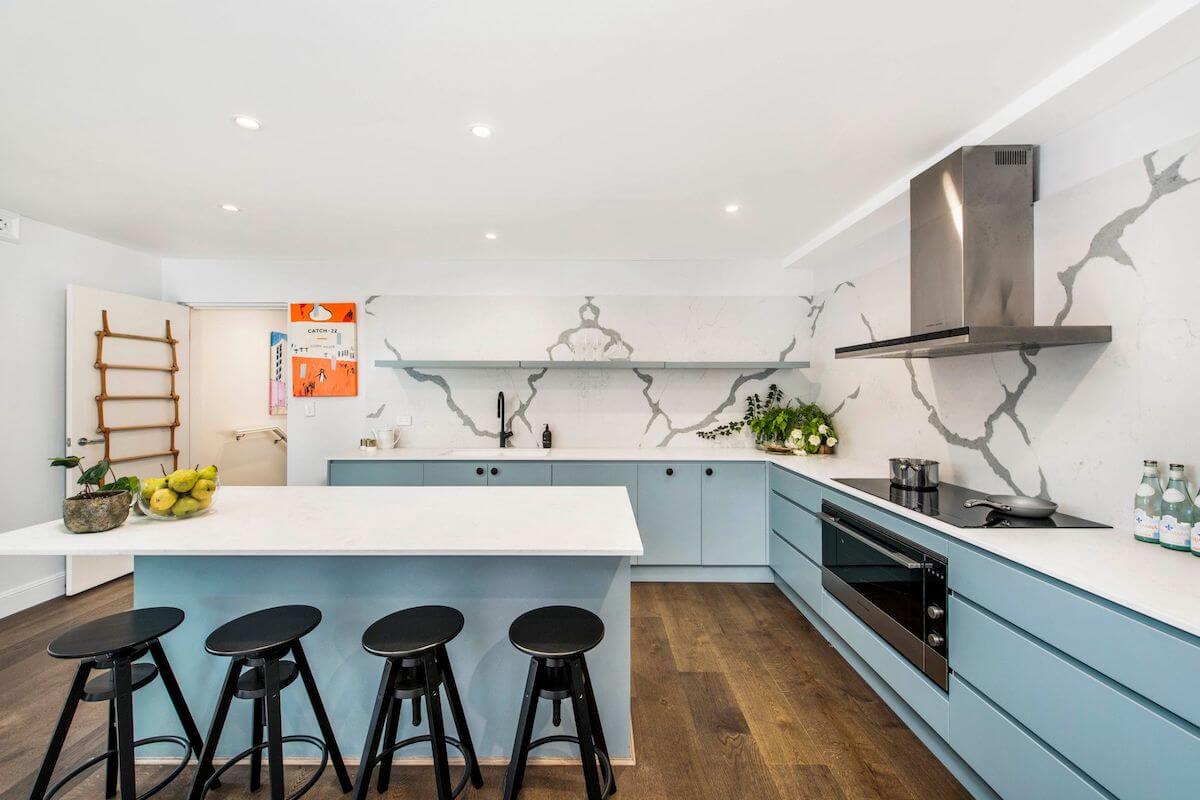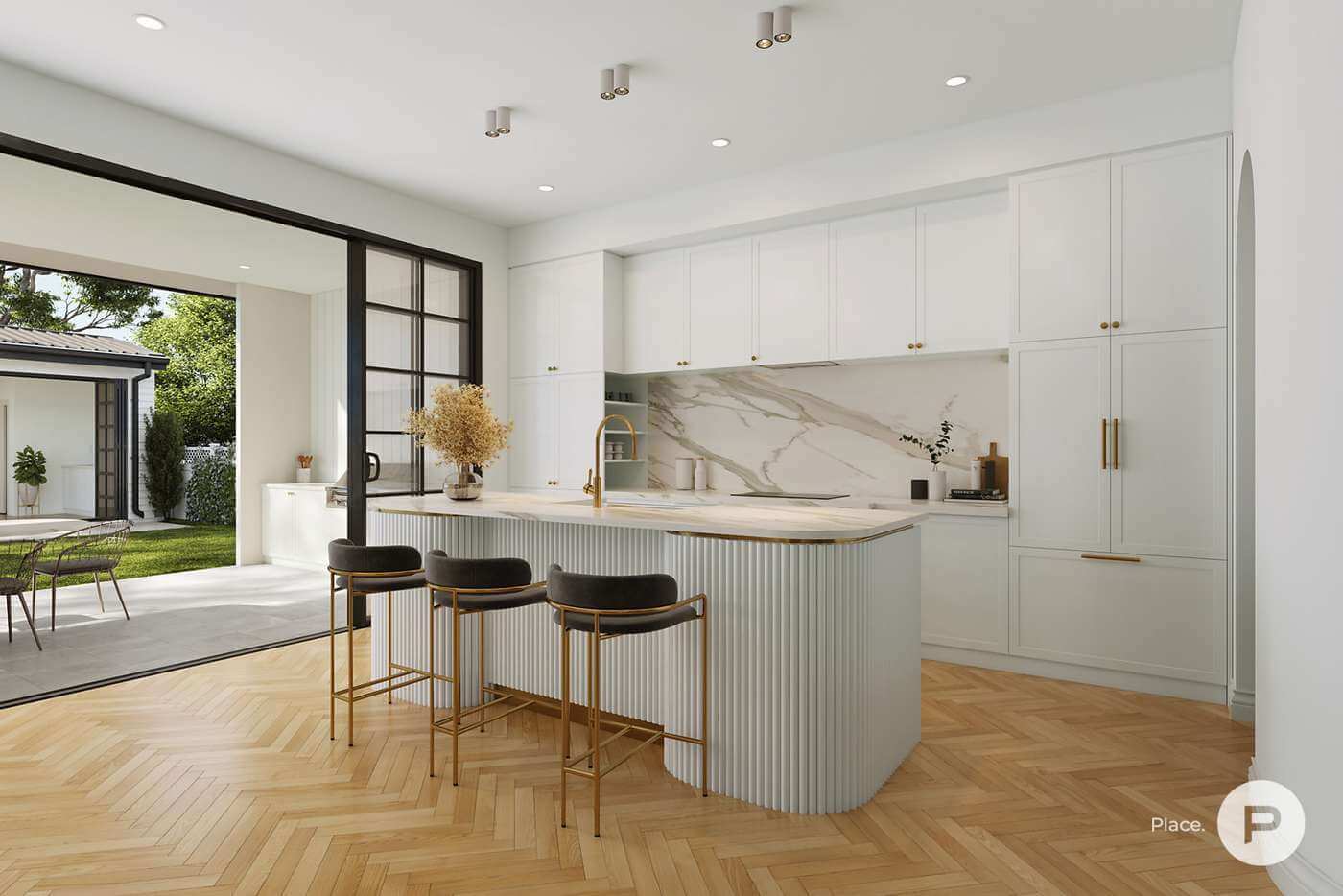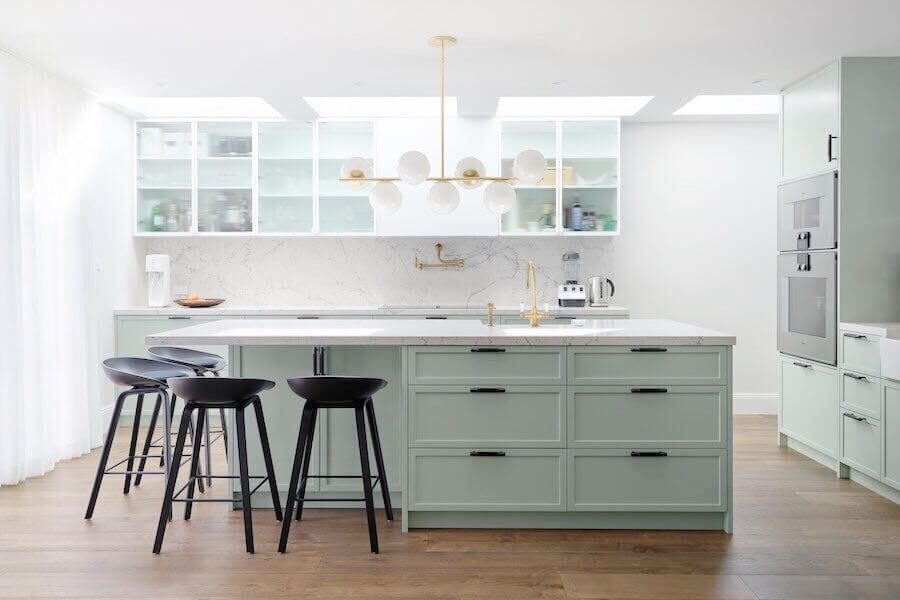Kitchen ergonomics: What is it and why you should embrace it

It’s no surprise that kitchens are one of, if not, the biggest selling points in a home. It’s a space that’s used multiple times daily and for all different reasons. Given the high expectations when it comes to kitchens now, it’s imperative to execute the right design.
A term you may come across when researching kitchen design is ‘ergonomics’. If you’re somewhat confused by what that term means exactly, it refers to efficiency within an environment specific to the person within it. By creating a space that is easier to navigate and use we eliminate discomfort, strain and risk of injury over time. As we become more conscious of making better health choices at the office and in the home, it’s unsurprising that ergonomics is now integral to good kitchen design.

When it comes to designing your kitchen, you will want to create a well-designed space with optimal ergonomics so that it’s a dream to work in. You utilise your kitchen every day performing an array of different tasks, which is why it warrants special attention to all the little details during the planning stage.
There’s generally a 10-year life expectancy for a kitchen, therefore it is considered a substantial investment and asset in your home. The importance lies within a well-planned layout and quality fixtures that will stand the test of time and will also add value if you decide to sell.
Topics in this article:
Tips to design an ergonomic kitchen
Savvy spending
A good starting point is to design the best kitchen you can afford. First, figure out your overall budget, then detail how you will allocate the funds between appliances, tapware, and fixtures like cabinetry, benchtops and tiles. You can then devote more budget to the items you really want or need to make your space as functional as possible.
You will be surprised to learn that you don’t always have to spend big to afford functionality. Companies, such as SALINI Appliances, sell stylish and affordable kitchen appliances to accommodate the demands of the Australian standard and market. If your budget is pushing the tighter side, think about the most important appliances you need and then work your budget around those so you can maximise bang for your buck.
If you’re not constrained to a tight budget, then you can afford to splurge! In this case, you should focus on finding kitchen appliances and fixtures that are designed to make your job quicker and easier. Ensure that they are not only efficient to use but also efficient to clean.
Forget the work triangle
What you may frequently see within kitchen designs is the ‘work triangle’ rule, where the three major kitchen utilities (the fridge, cooktop and sink) are placed in a triangle formation so you can easily access each zone in minimal steps. However, with advances in kitchen technology and kitchen appliances, you’ll find that many homes include more appliances than ever before. Because of this, the golden triangle isn’t always the most feasible layout for every modern kitchen anymore.
The most functional way to design, or renovate, your kitchen is to arrange it around work zones. This concept separates each common task you perform in the kitchen and aims to group the necessities required for each task into a considered zone; making each task more efficient and ergonomic. A typical kitchen may incorporate a cooking station, cleaning station, prepping station, and perhaps even a baking station. If you are fortunate to have enough space for a butler’s pantry to may want to set up your cleaning, prep or baking zone/s in there, so you can close all the mess and clutter away while you’re entertaining.

Go with the flow
Free circulation within your kitchen is key and your experience may be unfavourable if you don’t allow enough of it. Planning the right distances between your fixtures, benches and work zones is necessary to have a good flow which becomes increasingly important if you have more than one person working in the kitchen simultaneously.
Avoid blocking walkways and areas of the kitchen that have high traffic so there’s always a continuous flow to allow for more family members to use the kitchen at the same time. Think about how you would use the kitchen and try as best you can to eliminate any roadblocks that may potentially happen, for example, where the fridge door opens or how much distance there is between your bench and the door of your oven when it opens. Accessibility from all sides of your bench is ergonomically beneficial because you can move around your space more freely.
Reduce body strain
When it comes to planning your kitchen cabinetry and storage, think about the best means to maximise your efficiency and comfort. Consider swapping lower cupboards for drawers, they will increase accessibility and visibility. Items stored at the back of lower cupboards may never see the light of day again. Fully extended open drawers allow you to see all contents you have stored at once providing ease and practicality. But additionally, and arguably most importantly, drawers are easier on the body to navigate when compared to ducking down and crouching to see inside lower cupboards. If you still prefer cupboards, consider installing pull out racking and corner pull out aids for easier access.
Top tip- Installing your double or single oven on your wall will give you greater ease of movement and eliminates strain on your back taking food in and out of the oven when compared to installing it under your stove.

Storing your utensils near your dishwasher embraces good ergonomics because the flow of body motion is considerably easier. If you’re planning your kitchen, store them on either side of your dishwasher and ideally next to the sink because this will enable you to easily unload your dishwasher with the least amount of strain.
One of our recommendations is to install your dishwasher away from corner cupboards. It may look good in your design aesthetic, however, if you’re unloading your dishwasher, think about how many times you need to open and close it to put away your items in that corner cupboard. It’s good ergonomic practice to eliminate all obstructions in your movements.
The importance of lighting and optimising technology
Statement lighting in the kitchen has become increasingly popular. With an abundance of options available, it is easy to become distracted. First and foremost, make sure you have a well-illuminated space for safety and comfort. Most common ceiling lights are LED recessed and not only will they flood the room with light, but they’re flexible to incorporate into your design and are also energy efficient.
Top tip- Pendant or accent lights are a popular way to create a design statement. But be mindful of the functionality and the illumination the light will provide and not just how good it will look.

As technology has become part of our everyday lives, planning appropriate power points are particularly important when it comes to nailing kitchen ergonomics. If you’re planning your kitchen, communicate with your electrician and determine where exactly you want them to go to ensure you can use each specific work zone as you intend.
By following good ergonomics throughout the planning of your kitchen, you can optimise your space so that is as comfortable to use as it is beautiful. Planning is the key to creating an inviting space that you’re not only incredibly proud of but that will also stand the test of time.

We'd like to hear from you!
1 comment
Is the work triangle a part of kitchen ergonomy? What is the difference between a work triangle and a kitchen ergonomy?



